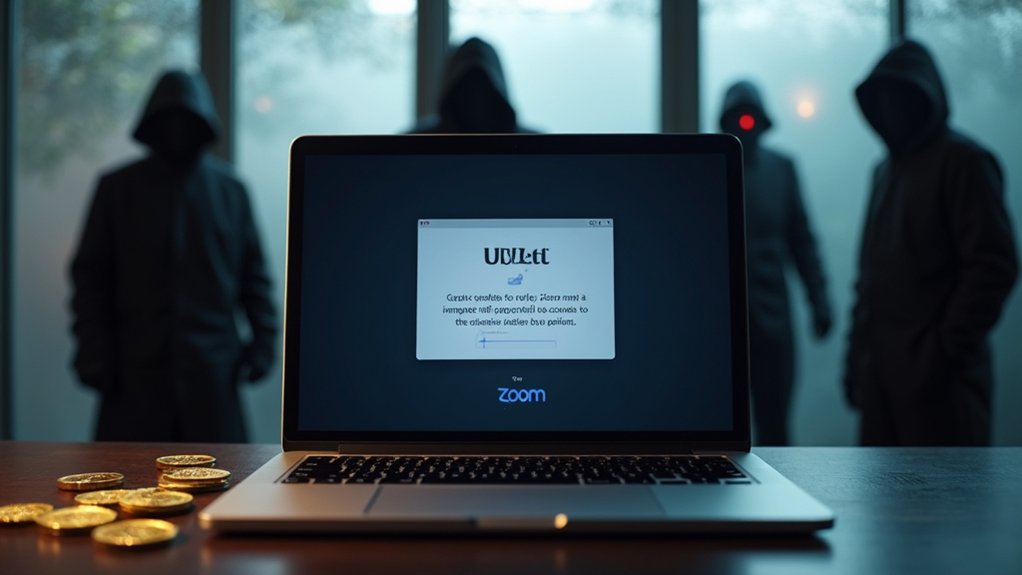While Apple enthusiasts have long clung to the comforting myth that their premium devices exist in some sort of digital sanctuary immune to malware, North Korean state-sponsored hackers have delivered a rather expensive reality check with NimDoor—a sophisticated malware strain specifically engineered to pilfer cryptocurrency assets from macOS systems.
The attack methodology reads like a masterclass in social engineering, beginning with impersonation on messaging platforms such as Telegram. Victims receive what appears to be a legitimate Google Meet invitation, followed by the pièce de résistance: a malicious payload masquerading as a Zoom update file. Because apparently, nothing says “trustworthy software” quite like an unsolicited update arriving via direct message from a newly acquainted contact.
Nothing screams legitimate software quite like surprise updates delivered through direct messages from mysterious new contacts.
What makes NimDoor particularly insidious is its foundation in Nim, an uncommon programming language that compiles into standalone executable binaries compatible across macOS, Windows, and Linux. This cross-platform versatility allows North Korean operatives to deploy one malware variant with minimal modifications—a rather efficient approach to international cybercrime.
The rarity of Nim-based malware also provides inherent stealth capabilities, as traditional antivirus solutions struggle to detect these unusual binary signatures. Once executed, NimDoor demonstrates remarkable persistence through macOS LaunchAgent services while implementing a strategic ten-minute delay to avoid immediate detection.
The malware systematically targets cryptocurrency wallet keys, browser-stored passwords, and encrypted Telegram databases alongside their decryption keys. Its payload includes installer binaries with names like ‘GoogIe LLC’ and ‘CoreKitAgent’—spelling creativity that would make any brand protection attorney weep.
The malware leverages AppleScript executions for system data theft and remote command functionality, exploiting Apple’s own automation features against users. This represents a significant evolution in North Korean cyber tactics, moving beyond their previous reliance on Go and Rust programming languages toward more sophisticated evasion techniques. The malware establishes encrypted connections with command-and-control servers using wss protocol, ensuring secure communications for threat actors.
For cryptocurrency, Web3, and blockchain sector participants, NimDoor underscores an uncomfortable truth: premium hardware pricing doesn’t include premium security guarantees. The campaign specifically targets entities handling digital assets, suggesting North Korean hackers have identified Mac users as particularly lucrative targets—a designation that likely reflects both wealth concentration and security complacency within the cryptocurrency ecosystem. The attacks demonstrate a concerning parallel to the recent Qwizzserial malware campaign, which compromised almost 100K Android devices through similar social engineering tactics. This development comes at a time when the broader DeFi ecosystem continues to face significant security challenges, with coding errors and potential hacks representing persistent threats to platforms built on permissionless blockchain technology.







